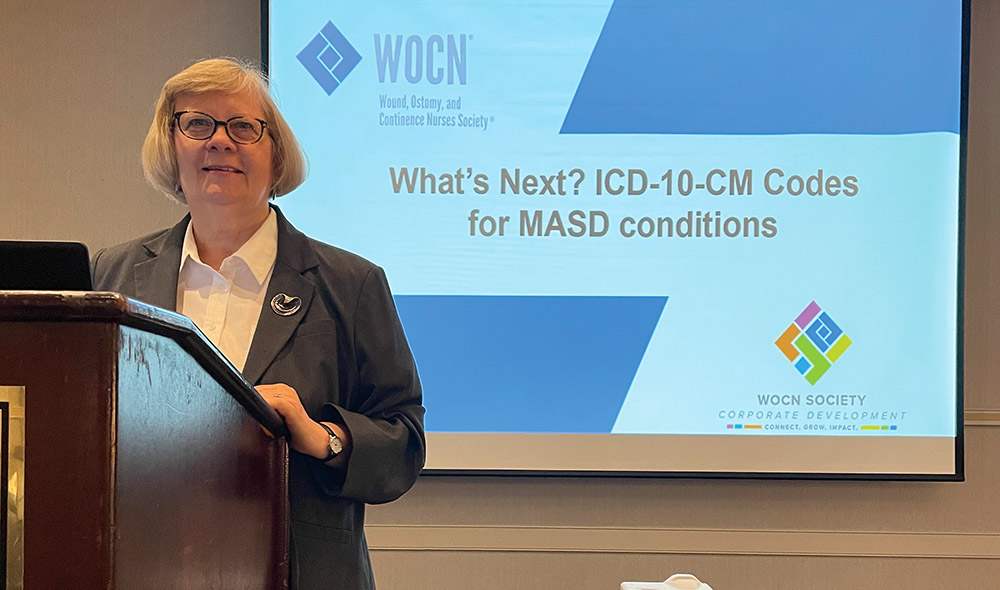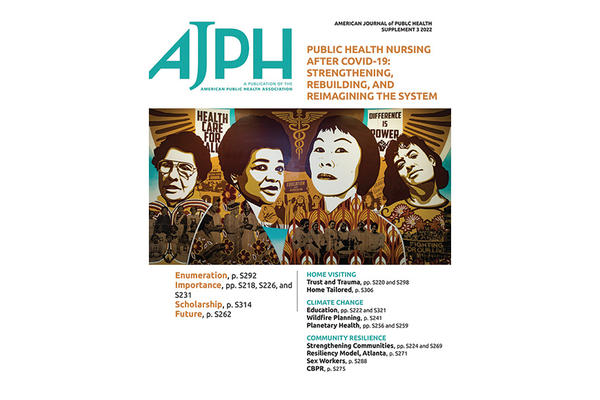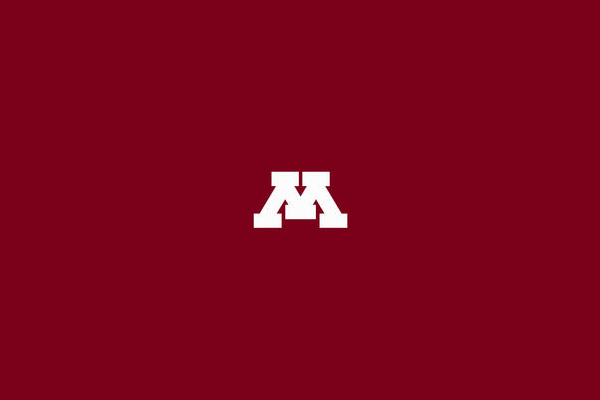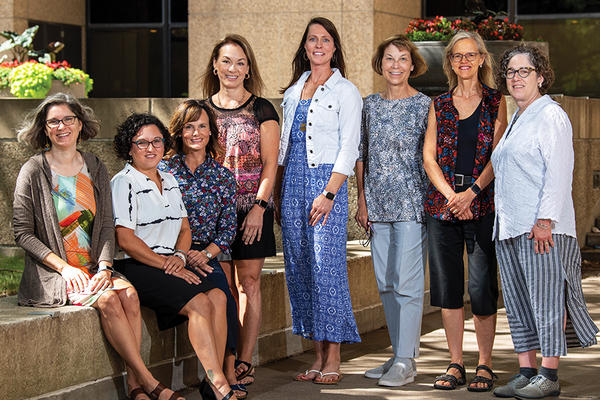New codes bring better treatment to patients with moisture-associated skin damage
Bliss served on WOCN Society leadership taskforce that ushered the policy change
October 25, 2022
Brett Stursa

Eight new codes for moisture-associated skin damage (MASD) conditions were added to the International Classification of Diseases, Tenth Revision, Clinical Modification (ICD-10-CM) after a Wound, Ostomy, and Continence Nurses (WOCN) Society leadership task force, including Professor Donna Bliss, PhD, RN, FGSA, FAAN, advocated for the policy change.
“In terms of the impact, this is really significant,” says Bliss. “We are able now to track and monitor these conditions and interventions for these conditions in a way that we haven’t before. It is really a long time in coming.”
MASD occurs when skin becomes inflamed or eroded because of prolonged exposure to moisture or irritants, such as urine, feces, digestive secretions or wound drainage. It is uncomfortable for the patient, feeling like sunburn, and can develop into more severe skin problems.
“The good news is it is very preventable and very manageable,” says Bliss. “This is one of those interventions where nurses can make a big impact. It can be prevented, it can be treated in a way so that it doesn’t develop into a more serious problem.”
Now with the specific diagnostic codes, there will be better ways of tracking MASD.
ICD-10-CM is a system used by health care providers to classify and code all health-related diagnoses, symptoms and procedures. Used for medical claim reporting in health care settings, ICD-10-CM codes are used to establish necessity for payment of health care services and procedures. The WOCNS application was approved by the ICD-10 Coordination and Maintenance Committee, which is a federal committee comprised of representatives from the Centers for Medicare and Medicaid Services and the Centers for Disease Control and Prevention’s National Center for Health Statistics.
The new codes will now enable nurses and other health care practitioners to code and bill for treating specific MASD conditions, which was not possible without the ICD-10-CM codes.
The new codes include:
• L24A0 Irritant contact dermatitis due to friction or contact with body fluids, unspecified
• L24A1 Irritant contact dermatitis due to saliva
• L24A2 Irritant contact dermatitis due to fecal, urinary or dual incontinence
• L24A9 Irritant contact dermatitis due friction or contact with other specified body fluids
• L24B0 Irritant contact dermatitis related to unspecified stoma or fistula
• L24B1 Irritant contact dermatitis related to digestive stoma or fistula
• L24B2 Irritant contact dermatitis related to respiratory stoma or fistula
• L24B3 Irritant contact dermatitis related to fecal or urinary stoma or fistula
Codes bring the potential of big data analysis
As a nurse researcher focusing on the epidemiology, assessment and management of incontinence and incontinence associated skin problems such as irritant contact dermatitis due to fecal, urinary or dual incontinence, Bliss is excited about what the new codes will mean for improved patient care and better health care provider education.
“I am very excited for the potential of big data analysis. We will be able to analyze large, national data sets that have these codes in them and develop more conclusive answers to our clinical and research questions. We’ll be able to analyze how interventions and treatments may improve the conditions — or not — over time,” says Bliss. “Studies up until now have been limited by the small number of sample sizes.”
Bliss is now turning her attention to ensuring that clinicians have knowledge of MASD and the new codes. She was the lead author of the task force that published a pictorial practice alert article informing wound ostomy and continence nurses and other health care practitioners about the new ICD-10-CM codes and explaining their application to MASD conditions. She is also presenting at regional meetings and conferences to increase awareness.
“This policy change empowers nurses to have their practice and their interventions recognized in terms of making a difference in better patient outcomes,” says Bliss.


